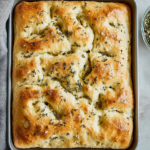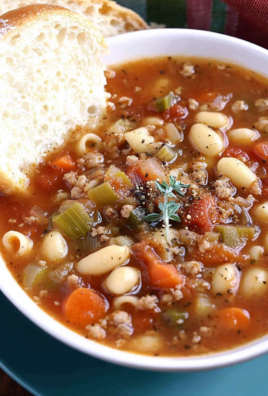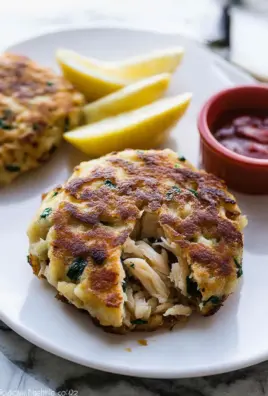With just a few simple ingredients and some patience, you can make soft, chewy, and flavorful focaccia bread at home. This no-knead recipe allows the dough to develop deep flavor through a slow fermentation process, resulting in a crispy, golden crust and a light, airy interior. Whether you enjoy it on its own, as a side dish, or as the base for sandwiches, this homemade focaccia will impress every time.

Why You’ll Love This Recipe
- No kneading required, making it easy for beginners.
- The long fermentation creates a rich, complex flavor.
- Crispy, golden crust with a soft, pillowy center.
- Versatile—enjoy it plain, with toppings, or as sandwich bread.
Preparation Phase & Tools to Use
Essential Tools and Equipment
- Large mixing bowl – For mixing and proofing the dough.
- Wooden spoon or spatula – For stirring the dough.
- Plastic wrap or kitchen towel – To cover the dough during fermentation.
- 9×13-inch baking pan – Provides the perfect thickness and shape.
- Measuring cups and scale – Ensures accuracy in ingredient proportions.
- Oven thermometer (optional) – Helps maintain the correct baking temperature.
Importance of Each Tool
Using a large mixing bowl allows the dough to rise without overflowing. A wooden spoon helps mix the ingredients without overworking the dough. A kitchen towel or plastic wrap prevents the dough from drying out during fermentation. The baking pan ensures the right texture and thickness, while an oven thermometer guarantees even baking.
Ingredients
For the Dough:
- 500 g (4 cups) bread flour
- 7 g (2 1/4 teaspoons) instant yeast
- 2 teaspoons kosher salt
- 480 g (2 cups) lukewarm water
- 6 tablespoons extra-virgin olive oil, divided
For Topping:
- Flaky salt, to taste
- 1 tablespoon chopped rosemary (optional)
Step-by-Step Directions
1. Mix the Dough
- In a large bowl, add the bread flour. On opposite sides of the bowl, add the yeast and salt to prevent direct contact.
- Mix the dry ingredients together, then create a well in the center.
- Pour in the lukewarm water and stir with a wooden spoon until a wet, shaggy dough forms.
2. Oil the Dough & Refrigerate
- Drizzle 2 tablespoons of olive oil over the dough. Use your fingers to coat the surface evenly.
- Gently lift and turn the dough to coat the sides and bottom of the bowl.
- Cover the bowl tightly with plastic wrap and refrigerate for 18 to 72 hours.
3. Prepare the Baking Pan
- Grease a 9×13-inch baking pan with non-stick spray.
- Drizzle 2 tablespoons of olive oil into the pan and spread it evenly.
4. Shape the Dough & Second Rise
- Remove the dough from the fridge. Using your fingers, gently fold the edges toward the center to form a loose ball.
- Transfer the dough to the prepared pan, turning it to coat in olive oil.
- Leave the dough uncovered to rise in a warm place for 3 to 4 hours, until it nearly fills the pan.
5. Preheat the Oven
- Preheat the oven to 425°F (218°C) during the last 30 minutes of the second rise.
6. Create Dimples & Add Toppings
- Drizzle the remaining 2 tablespoons of olive oil over the dough and spread it evenly.
- Sprinkle chopped rosemary if using.
- Using your fingertips, press deep dimples into the dough. This helps the bread bake evenly and prevents it from rising too much.
- Sprinkle flaky salt over the surface.
7. Bake the Focaccia
- Place the pan in the preheated oven and bake for 25 to 30 minutes, or until golden brown and crisp.
- Let the bread cool in the pan for 5 minutes, then transfer it to a wire rack to prevent sogginess.
- Allow it to cool for at least 10 minutes before slicing and serving.
Serving Suggestions
Focaccia can be enjoyed in several ways, from simple dips to gourmet meals. Here are some of the best ways to serve it:
- Dipped in Olive Oil and Balsamic Vinegar – A classic way to enjoy focaccia is by dipping it into a mix of extra-virgin olive oil, balsamic vinegar, and crushed black pepper.
- As a Sandwich Bread – Slice it horizontally and use it for paninis, deli sandwiches, or breakfast sandwiches with eggs and cheese.
- With Soup – Serve it alongside tomato soup, minestrone, or creamy mushroom soup to soak up the flavors.
- As a Pizza Base – Top with tomato sauce, cheese, and vegetables for a thick, chewy pizza.
- With Charcuterie and Cheese – Pair it with cured meats, cheeses, olives, and roasted nuts for an Italian-style appetizer.
- With Roasted Vegetables – Serve it with roasted eggplant, zucchini, bell peppers, or caramelized onions for a Mediterranean-style meal.
- To Make Croutons – Cube leftover focaccia and bake until crisp to make delicious homemade croutons for salads.
- With Scrambled Eggs – Toasted focaccia pairs well with scrambled eggs, smoked salmon, or avocado for a savory breakfast.
Common Mistakes to Avoid
While focaccia is a relatively simple bread to make, a few common mistakes can affect its texture and flavor. Here’s how to avoid them:
1. Skipping the Overnight Rise
A long, slow fermentation in the fridge enhances flavor and texture. If you skip this step, the focaccia may taste bland and have a less airy crumb.
How to Fix It: Always plan ahead and let the dough ferment for at least 18 hours in the refrigerator.
2. Not Using Enough Olive Oil
Focaccia gets its signature crispy crust and rich flavor from generous amounts of high-quality olive oil.
How to Fix It: Be sure to oil the pan well and drizzle extra olive oil on top before baking.
3. Underproofing the Dough
If the dough does not rise long enough, the focaccia can turn out dense and heavy instead of light and airy.
How to Fix It: Allow the dough to rise at room temperature for 3 to 4 hours after refrigeration until it fills most of the pan.
4. Not Dimpling the Dough Properly
Dimpling isn’t just for appearance—it prevents the dough from puffing up too much and helps distribute olive oil evenly.
How to Fix It: Use your fingertips to press deep dimples all over the surface before baking.
5. Overbaking or Underbaking
Focaccia should have a golden-brown crust but still be soft inside. Overbaking can dry it out, while underbaking results in a doughy center.
How to Fix It: Bake at 425°F (218°C) for 25 to 30 minutes, and check for a deep golden crust before removing it from the oven.
6. Cutting the Bread Too Soon
Slicing into focaccia immediately after baking can make it soggy, as steam gets trapped inside.
How to Fix It: Allow the bread to cool for at least 10 minutes on a wire rack before slicing.
Best Side Dishes for Focaccia
Focaccia pairs beautifully with a variety of side dishes, whether you’re serving it as an appetizer or part of a larger meal.
1. Tomato Basil Soup
The rich, slightly tangy flavors of tomato soup complement the olive oil and crispy crust of focaccia. Serve warm for a comforting meal.
2. Italian Antipasto Salad
A mix of romaine lettuce, olives, cherry tomatoes, artichokes, salami, and mozzarella creates a fresh and vibrant side that balances the richness of the bread.
3. Roasted Garlic and Hummus
The creamy texture of hummus pairs perfectly with the crispy edges and soft interior of focaccia. Add a drizzle of olive oil and a sprinkle of smoked paprika for extra flavor.
4. Grilled Vegetables
Grilled zucchini, eggplant, and bell peppers provide a smoky and slightly sweet contrast to the salty, savory focaccia.
5. Burrata with Balsamic Glaze
Burrata, a creamy Italian cheese, melts in your mouth when paired with warm focaccia. Drizzle with balsamic glaze for an extra layer of flavor.
6. Marinated Olives
A mix of green and black olives, marinated in olive oil, garlic, and herbs, is a simple yet flavorful side to complement the bread.
7. Spaghetti Aglio e Olio
A light garlic and olive oil pasta pairs well with focaccia, especially if served with a glass of white wine.
8. Lemon Herb Chicken
For a more filling meal, serve focaccia alongside roasted or grilled chicken marinated in lemon, garlic, and fresh herbs.
Recipe Tips for the Best Focaccia
1. Use High-Quality Olive Oil
Since olive oil plays a major role in the flavor and texture of focaccia, always use extra-virgin olive oil. It enhances the taste and creates a crispy crust.
2. Choose the Right Flour
Bread flour is the best choice because of its higher protein content, which gives the bread its chewy texture. All-purpose flour can be used, but the final result may be slightly softer.
3. Allow Enough Time for Fermentation
A long fermentation process develops deeper flavors. If you can, let the dough rest in the refrigerator for at least 18 hours and up to 72 hours for the best results.
4. Don’t Skip the Second Rise
After shaping the dough in the pan, give it time to rise again. This helps the bread develop air pockets and achieve its signature light texture.
5. Generously Dimple the Dough
Pressing deep dimples into the dough ensures that it bakes evenly and absorbs the olive oil properly. Use your fingertips to create small indentations all over the surface.
6. Adjust Baking Time Based on Your Oven
Every oven is different, so keep an eye on the bread in the last 5 minutes of baking. It should be golden brown and slightly crisp around the edges.
Storage Instructions
Room Temperature Storage
- Store focaccia in an airtight container or wrapped in plastic wrap at room temperature.
- It stays fresh for up to 3 days.
- Avoid refrigerating, as it can dry out the bread.
Freezing Instructions
- Wrap focaccia tightly in plastic wrap and then in aluminum foil to prevent freezer burn.
- Store in the freezer for up to 3 months.
- To thaw, let it sit at room temperature for a few hours before reheating.
How to Reheat Focaccia
1. In the Oven (Best Method)
- Preheat the oven to 350°F (175°C).
- Place focaccia on a baking sheet and heat for 5 to 10 minutes until warm and crispy.
2. On the Stovetop
- Heat a dry skillet over medium heat.
- Place a slice of focaccia in the pan and toast for 2 to 3 minutes per side.
3. In the Toaster Oven
- Set the toaster oven to 350°F (175°C).
- Heat for 5 minutes until warmed through.
4. In the Microwave (Not Recommended)
- If you must use a microwave, wrap the focaccia in a damp paper towel and heat for 10 to 15 seconds to prevent it from becoming too chewy.
Frequently Asked Questions (FAQs)
1. Can I make focaccia without letting it rise overnight?
Yes, but the flavor won’t be as developed. If short on time, let the dough rise at room temperature for 2 to 3 hours before shaping and baking.
2. What’s the difference between focaccia and pizza dough?
Both use similar ingredients, but focaccia has more hydration and olive oil, making it softer and more flavorful. Pizza dough is typically thinner and crispier.
3. Why is my focaccia dense instead of airy?
This can happen if the dough didn’t rise long enough, the yeast was expired, or the dough wasn’t handled gently. Always allow proper fermentation and avoid overworking the dough.
4. Can I add different toppings to focaccia?
Absolutely. Try toppings like caramelized onions, olives, cherry tomatoes, garlic, parmesan, or sun-dried tomatoes for extra flavor.
5. How do I prevent the bottom from getting soggy?
Transfer the focaccia to a wire rack immediately after baking to prevent trapped steam from making the crust soft.
6. Can I use active dry yeast instead of instant yeast?
Yes, but active dry yeast needs to be activated first. Dissolve it in warm water and let it sit for 5 to 10 minutes until foamy before adding it to the flour.
7. Why did my focaccia not brown properly?
If the bread isn’t browning, your oven might not be hot enough. Increase the temperature slightly or place the pan on a higher oven rack for the last few minutes of baking.
8. Can I make focaccia gluten-free?
Yes, but you’ll need a gluten-free flour blend with xanthan gum for structure. The texture may be different, but it will still be delicious.
Conclusion
Focaccia is one of the easiest and most rewarding breads to make at home. By following a few simple techniques, you can achieve a crispy crust, soft crumb, and rich olive oil flavor. Whether enjoyed on its own, as part of a meal, or with creative toppings, this homemade focaccia will quickly become a staple in your kitchen. With proper storage and reheating, you can enjoy it fresh for days. Try different variations and toppings to make it your own.
Easy Homemade Focaccia Bread
Ingredients
For the Dough:
- 500 g 4 cups, spoon and leveled bread flour
- 7 g 2 1/4 teaspoons or 1 standard packet instant yeast
- 2 teaspoons kosher salt
- 480 g 2 cups lukewarm water (see notes)
- 6 tablespoons high-quality extra-virgin olive oil divided
For Topping:
- Flaky salt to taste
- 1 tablespoon chopped rosemary optional
Instructions
Mix the Dough:
- In a large bowl, combine the bread flour. Add the yeast and kosher salt on opposite sides of the bowl to prevent direct contact initially.
- Use your fingers to mix the dry ingredients together, then create a well in the center.
- Pour in the lukewarm water and stir with a wooden spoon until a wet, shaggy dough forms.
Oil the Dough & Refrigerate:
- Drizzle 2 tablespoons (30 g) of olive oil over the dough. Use your fingers to rub the oil over the surface.
- Gently wiggle the dough from the edges of the bowl to coat the sides and bottom with oil.
- Cover the bowl tightly with plastic wrap and refrigerate for at least 18 hours, up to 72 hours.
Prepare the Baking Pan:
- Spray a 9×13-inch baking pan with non-stick spray and drizzle 2 tablespoons (30 g) of olive oil in the center. Set aside.
- Shape the Dough & Second Rise:
- Remove the dough from the fridge. Use your fingers to pull the edges of the dough towards the center while rotating the bowl, forming the dough into a ball.
- Transfer the dough to the prepared baking pan, turning it a few times to coat the entire surface in olive oil.
- Leave the dough uncovered to rise in a warm, draft-free place for 3-4 hours, until it nearly fills the pan.
Preheat the Oven:
- Towards the end of the second rise, preheat the oven to 425°F (218°C).
Dimples & Topping:
- Drizzle the remaining 2 tablespoons (30 g) of olive oil over the dough and rub it evenly over the surface.
- Sprinkle the chopped rosemary (if using) evenly.
- Use your fingers to press straight down into the dough, creating deep dimples all over. Gently stretch the dough to fill the corners of the pan, if needed.
- Sprinkle flaky salt over the top.
Bake the Bread:
- Bake for 25-30 minutes, or until golden brown and pulling away from the sides of the pan.
- Let the focaccia cool in the pan for 5 minutes, then carefully transfer it to a wire rack (use a large metal spatula if needed) to prevent the bottom from getting soggy.
- Allow it to cool for 10 minutes before slicing and serving.




Leave a Comment